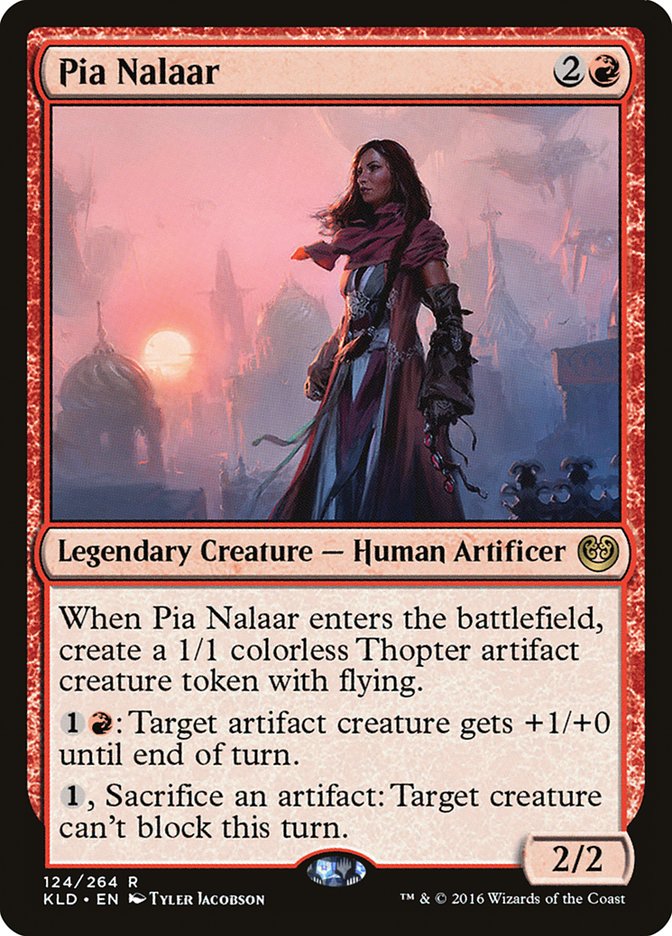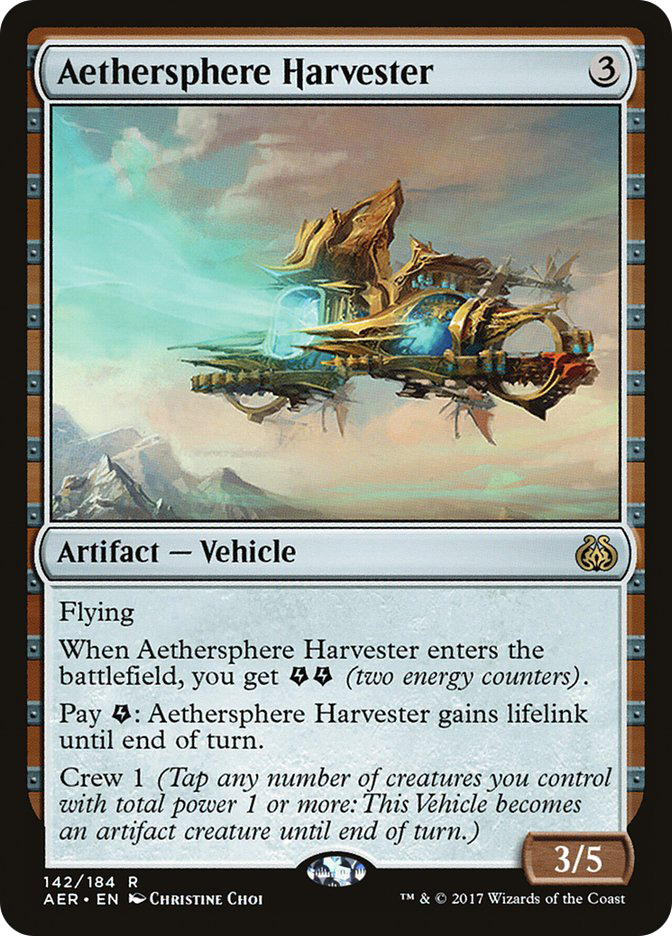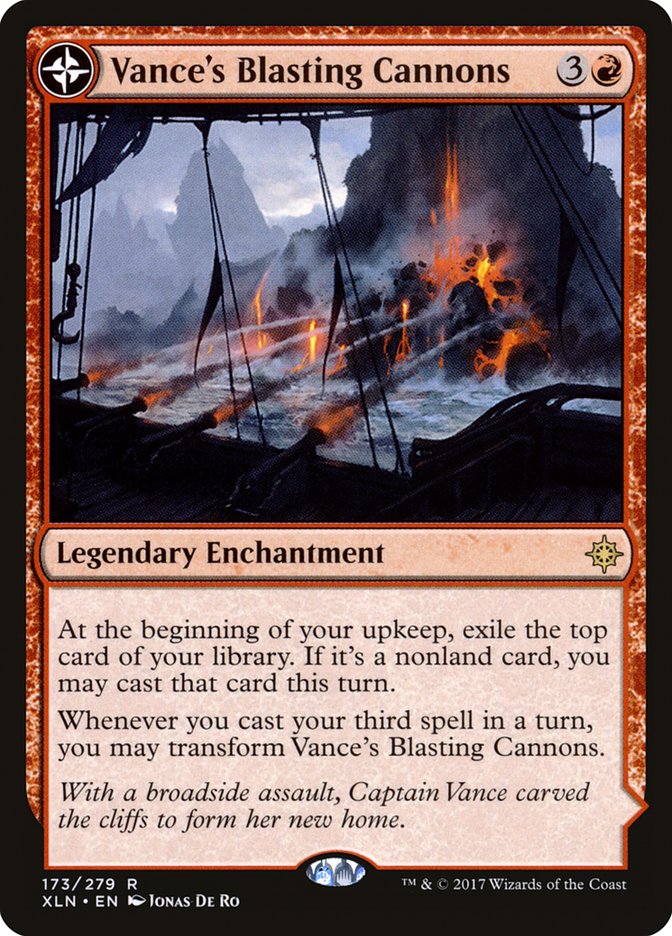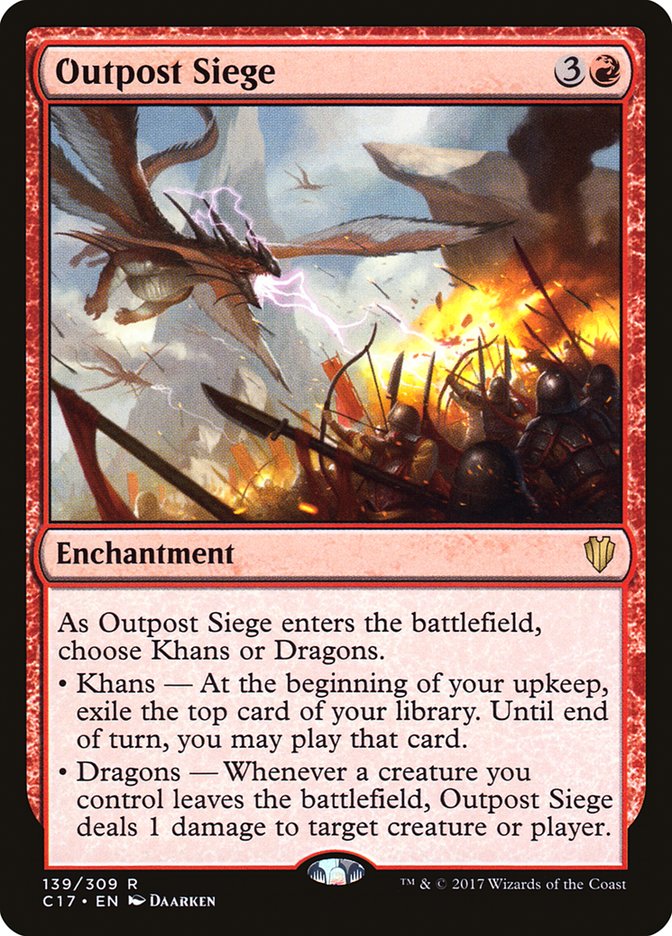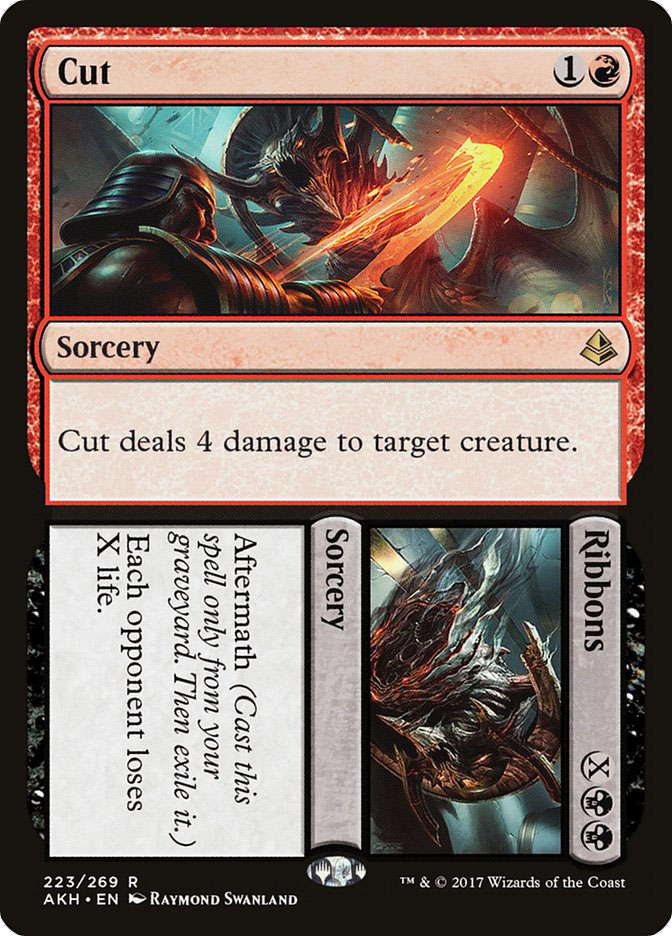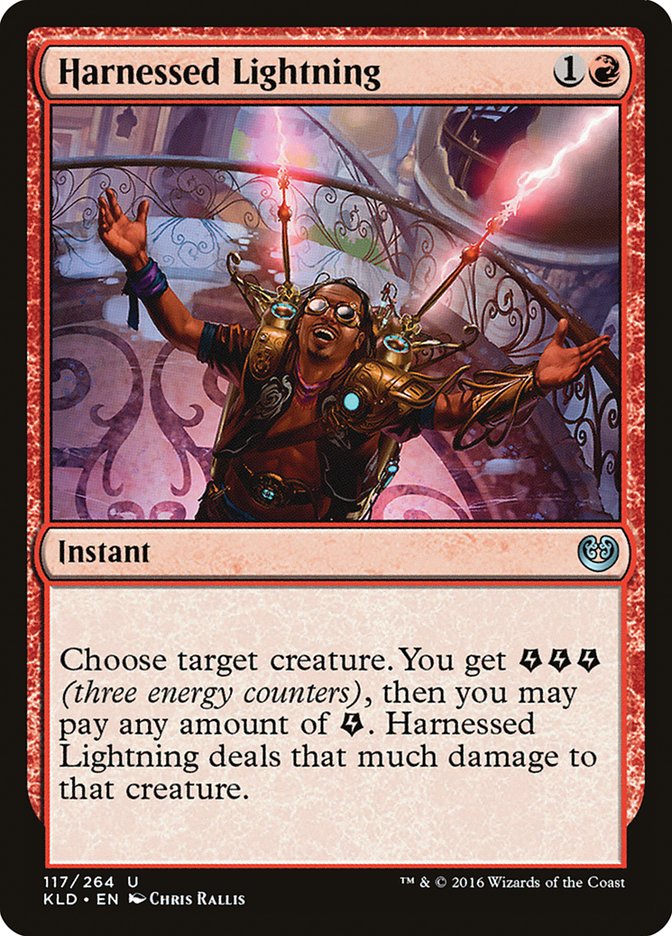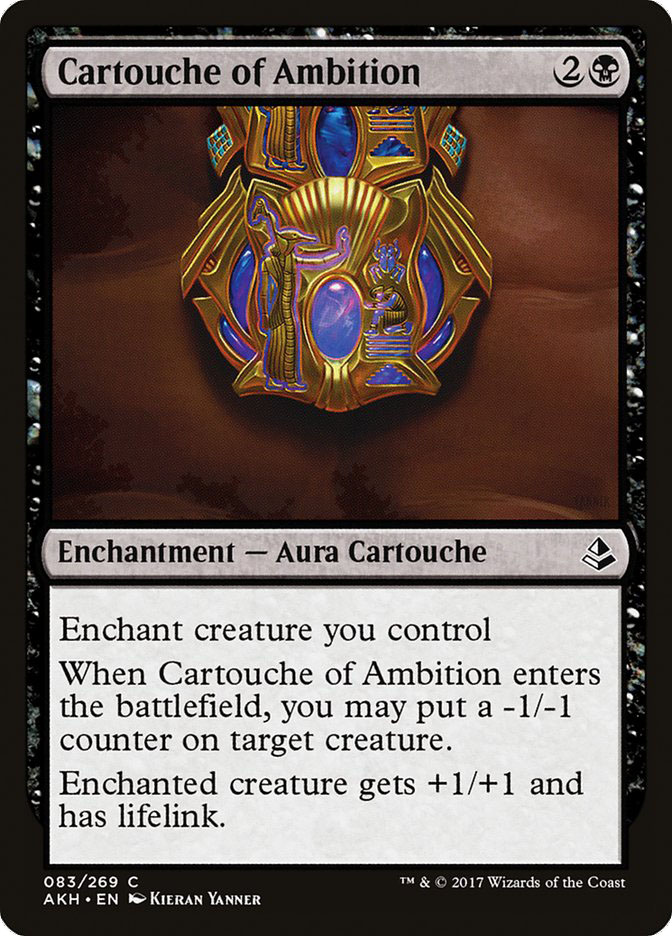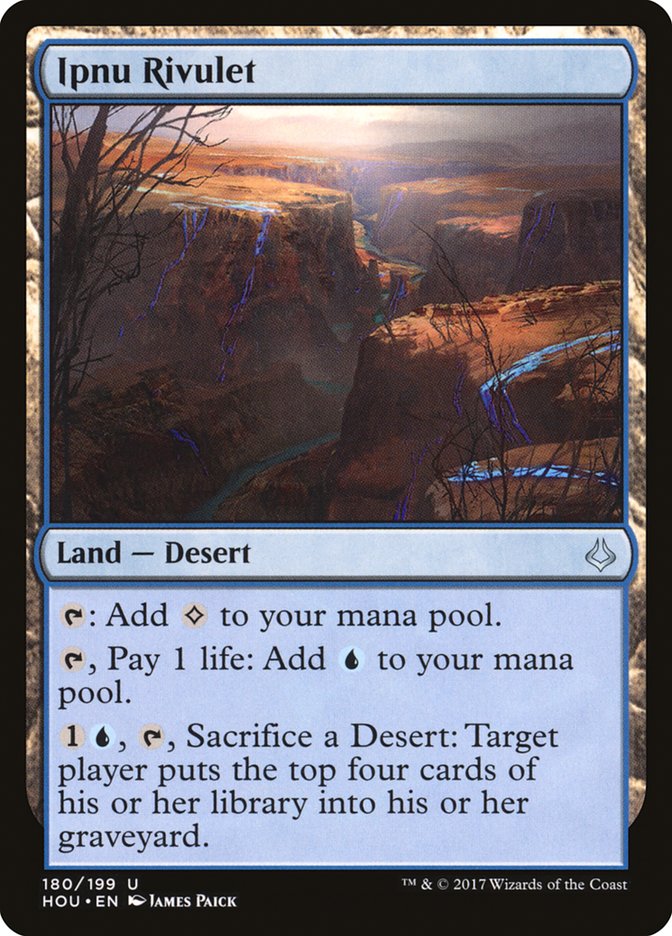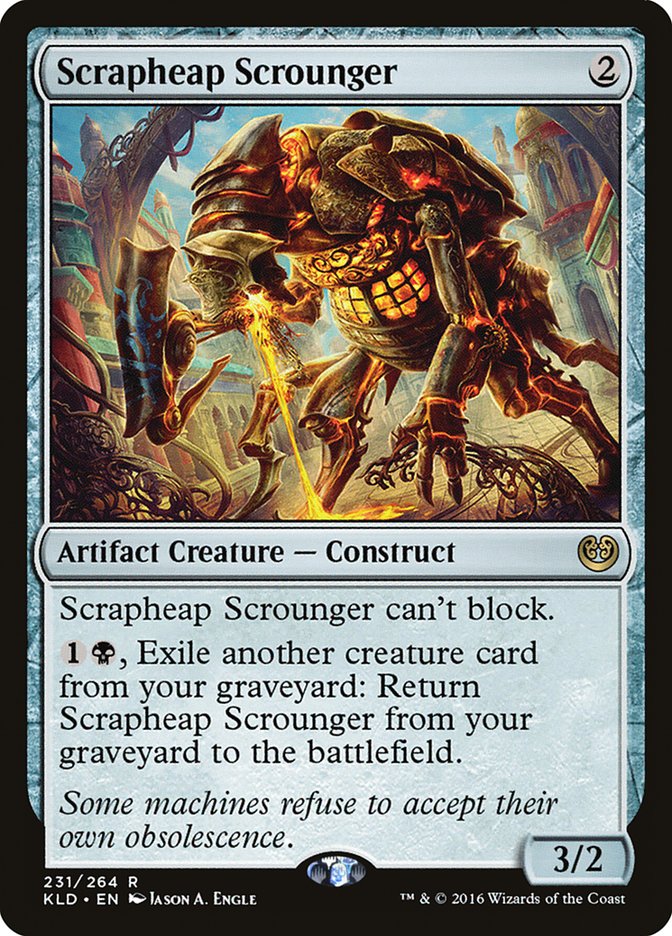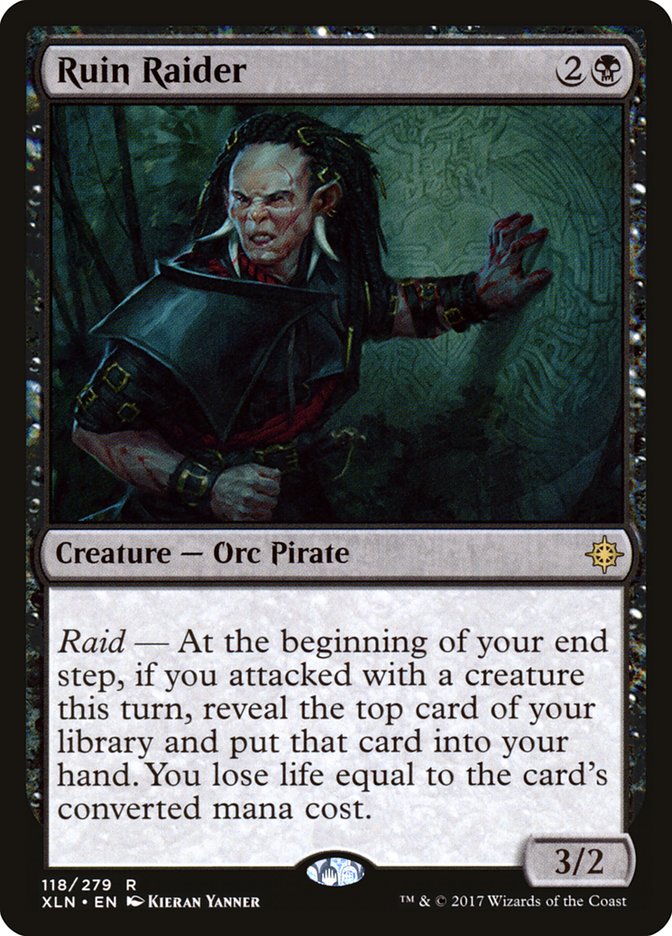Ixalan is out on Magic Online, but the first few days of Standard results have been rather disappointing. Among the 5-0 decks there is very little innovation, although that’s to be somewhat expected when, despite rotation, there are powerful pre-existing decks that players likely own already. In the first few days of a set release, the new cards are expensive and difficult to acquire, so it’s no surprise that the Standard Leagues haven’t even reached 100 players yet.
Still, the results aren’t irrelevant. It’s clear that Temur Energy, Ramunap Red, and U/W Approach are going to be viable decks, and what wins at #SCGDFW must perform well against all three. Maybe that means tuning one of those decks to beat the other two, but maybe it involves something new entirely.
For now, let’s cover the current players.
Creatures (23)
- 4 Bomat Courier
- 3 Kari Zev, Skyship Raider
- 4 Hazoret the Fervent
- 4 Ahn-Crop Crasher
- 4 Soul-Scar Mage
- 4 Earthshaker Khenra
Planeswalkers (1)
Lands (24)
Spells (12)

Not much has changed with Ramunap Red except for the stock lists being closer than they’ve ever been. You could shave a Hazoret the Fervent or a land for another Chandra, Torch of Defiance, but that’s about all you can really do. Some people find room for Rigging Runner or an additional three-drop, but I don’t recommend it.
Your best draws are very difficult for both Temur Energy and U/W Approach, but your average draws are very beatable. Post-sideboard, you don’t get much better against either deck and they presumably get much better against you. Ramunap Red is a fine litmus test for Standard, but I don’t foresee it being the best deck. Temur Energy has certainly taken that mantle by now.
Pia Nalaar was one of the best sideboard cards in the mirror when everyone had Village Messenger, but now it’s far worse than Aethersphere Harvester. They definitely have Abrades, but it’s not uncommon for your opponent to have to use one on a Kari Zev, Skyship Raider or some such. Some players have gone so far as to maindeck Pia Nalaar, but playing the card in the 75 at all seems like a trap to me.
The “go big” sideboard isn’t surprising anyone these days, but it’s still effective.
Vance’s Blasting Cannons, while strong, is not Outpost Siege! Outpost Siege allowed you to make land drops while building up your hand, eventually allowing you to play two spells in one turn. Those were the types of turns that kept you flourishing into the late-game. With Vance’s Blasting Cannons, if you reveal a land, it’s like you did nothing at all. That’s a big cost for a four-mana enchantment that doesn’t affect the battlefield.
You should probably be building toward transforming Vance’s Blasting Cannons rather than treating it like an Outpost Siege, but that’s easier said than done in post-sideboard games. With cards like Chandra, Torch of Defiance around, I don’t think Vance’s Blasting Cannons will see much play, especially once people get disappointed with it.
Creatures (23)
- 4 Longtusk Cub
- 3 Bristling Hydra
- 4 Whirler Virtuoso
- 4 Servant of the Conduit
- 4 Rogue Refiner
- 2 Glorybringer
- 2 The Scarab God
Planeswalkers (1)
Lands (22)
Spells (14)

This isn’t much different from the lists that performed well at Japanese Nationals.
The black slash is mainly for The Scarab God, although Cut // Ribbons is a helluva card too and basic Swamp makes using the aftermath an actual plan. That said, this above list doesn’t play it because of how powerful Abrade, Harnessed Lightning, and Magma Spray are, but they could and probably should.
Harnessed Lightning is your Doom Blade, as it’s the only card capable of killing big things like Glorybringer at instant speed. Abrade provides a little bit of utility by giving you maindeck artifact removal while still hitting most of the smaller threats. While cheap and able to fill your curve at times, Magma Spray falls a little short on killing premier targets, but you don’t want all your removal to cost two mana.
Rootbound Crag is mostly an improvement over Game Trail. One of Temur’s occasional issues is how many lands enter the battlefield tapped past Turn 4, but this one provides some much-needed untapped mana for its five-drops.
Six counterspells in the sideboard is an indicator of how bad the U/W Approach matchup is in Game 1. With some early pressure and a counterspell for Fumigate or Settle the Wreckage, it’s not difficult to win the post-sideboard games. Sadly, there’s very little U/W can do about it besides dealing with each of your threats as you present them.
I’m actually skeptical of The Scarab God going forward. I wouldn’t typically advise against playing one of the best threats in the format because people are sideboarding answers for it, but when it involves whether or not you should splash, I’m less of a fan. The answers to The Scarab God that people are playing aren’t particularly great, nor is there any guarantee they’ll have an answer left by the time you play it, but it may no longer be worth a splash.
Cartouche of Ambition is the anti-red measure of choice, but again, that splash is questionable. If you get to suit up a Bristling Hydra, great, but Bristling Hydra tends to stop them in their tracks anyway. The real trick is finding a way to kill them while they’re sitting behind Hazoret the Fervent and Shocking you every turn.
Beating the Temur mirror could involve going under them, which some people are doing with Voltaic Brawler, or going over the top with Glimmer of Genius and Torrential Gearhulk. Then again, you could also pick up a stock list and play better than your opponent.
No matter which way you decide to build it, Temur Energy is the best deck and will continue to be for at least a few weeks. It’s a solid deck with no clear weakness and can sideboard answers for whatever issues it has.
Lands (24)
Spells (36)

Other cards that have shown up in this archetype include:
Make no mistake: U/W Approach is more of a Turbo-Fog deck than anything else. There is very little need for hard counterspells because you’re not trying to control the entire game. You’re just trying to buy time until you can resolve your win condition.
Your Game 1 matchup against Ramunap Red is difficult, whereas the post-sideboard games are a bit easier. The matchup against Temur Energy is basically the reverse. With a little bit of fine-tuning, Approach could be the best deck for Week 1.
Many have lamented the lack of interaction in U/W after rotation, but clever players are finding ways around that. Aether Meltdown, Slash of Talons, Settle the Wreckage, and even Farm // Market might not be exciting cards, but they get the job done. Settle the Wreckage is particularly strong and will likely show up in a bunch of different spots.
Search for Azcanta has been excellent and some mirror matches are even playing Field of Ruin to fight them, which doesn’t sound like the worst idea.
Ipnu Rivulet is an interesting choice that can help you find your second Approach of the Second Sun more quickly, but running four copies seems like nonsense to me unless you’re also trying to use them as a win condition in mirror matches.
The main downside to U/W Approach is the prevalence of Temur Energy and their sideboard counterspells. If you can find a way around that, you should be in good shape. Honestly, the best plan seems to be a pile of removal plus Search for Azcanta and killing all their threats. At that point, you should be free to resolve Approach at your leisure. Since the removal options are rather thin, maybe that plan doesn’t work, but it’s better than trying to splash Duress or Negate their Negates.
One of the most forgotten archetypes is B/G Energy, or any form of B/G entirely. The mana in the format may have gotten worse as a whole, but any deck with Attune with Aether, Aether Hub, and various fastlands is going to be able to splash if necessary. Both red and blue are reasonable splashes.
Creatures (28)
- 4 Longtusk Cub
- 3 Bristling Hydra
- 4 Winding Constrictor
- 2 Rishkar, Peema Renegade
- 3 Glint-Sleeve Siphoner
- 4 Rogue Refiner
- 4 Walking Ballista
- 2 The Scarab God
- 2 Hostage Taker
Lands (22)
Spells (10)
Sideboard

For Sultai, the real question is whether or not what you’re doing is better than what Temur is doing. Your hope is that you have better removal, more card advantage, a lower mana curve, and some powerful Winding Constrictor starts. In reality, your cards are more situational and, should the game go long, your topdecks aren’t as robust.
For the most part, the black removal is worse than the red removal. Die Young, while serviceable (especially at removing Hazoret the Fervent), suffers against haste creatures, value creatures, and enormous creatures. It’s no Harnessed Lightning.
Cards like Hostage Taker and The Scarab God are potentially great depending on the situation, but I’m not sure they’re any better than playing up the +1/+1 counter theme with something more aggressive, like Verdurous Gearhulk. The counterspells out of the sideboard are nice, but maybe Duress is enough to fight U/W Approach.
Unfortunately, I think the main draw to B/G is the Winding Constrictor / Walking Ballista package. While that used to be game ending against Ramunap Red, that’s not exactly the case anymore. They are less all-in on things like Village Messenger (or, in today’s Standard, Rigging Runner), and are more reliant on four Hazoret the Fervents and Chandra, Torch of Defiance. They are also more likely to run all the three-damage burn spells than last season, so the likelihood of Winding Constrictor surviving isn’t high.
I think we need another reason to be B/G.
Creatures (24)
- 2 Verdurous Gearhulk
- 4 Longtusk Cub
- 4 Scrapheap Scrounger
- 2 Greenbelt Rampager
- 4 Winding Constrictor
- 2 Rishkar, Peema Renegade
- 4 Walking Ballista
- 2 Ruin Raider
Lands (21)
Spells (15)
Sideboard

This deck was modeled heavily after a version Ben Stark played last year.
Jund is more aggressive, so the comparison to Temur isn’t apt, as they’re trying to do different things. The main draw to this deck was getting to play Unlicensed Disintegration and that’s not any different now. That’s probably the best card that very few people are talking about right now, but it obviously has a rather strict deckbuilding restriction. Still, it’s one of the best removal spells in the format and is worth building around.
Scrapheap Scrounger is pretty bad right now. It still fights through most early-game threats, but not being able to block is a rather large downside. Additionally, most decks can ignore Scrapheap Scrounger for a while and the games are fast-paced enough that you might not have time to bring them back later. Playing Scrapheap Scrounger used to be something I was actively interested in doing, but now it’s something I’d rather avoid.
Ruin Raider is absolutely not a Tireless Tracker replacement. The life loss is a relevant downside and having multiples active is frequently a death knell unless your curve is abnormally low, like in a Mono-Black Aggro deck. That said, if you get to curve into Ruin Raider while being ahead on tempo, you will likely win the game. Given how much removal people play and how quick they are to point it at your first couple of plays, it’s easier said than done.
Once we have more early-game cards, it’s possible that Ruin Raider becomes an all-star four-of, but for now, it looks like it will see play in small numbers unless there happens to be a hyper-aggressive deck out there.
***
From my experience, it doesn’t seem like Pirates are cutting it, although Dinosaurs remain a strong choice. Players might be waiting until the results from this weekend before buying into an entirely brand new deck. There are other strong choices out there too, like God-Pharaoh’s Gift and Electrostatic Pummeler. Some U/B decks hybridizing control and reanimator have popped up online as well and could potentially make a showing.
If I were playing in #SCGDFW, I would probably register a more controlling build of Temur Energy, but it would be a gamble. This might be the weekend to play U/W Approach before everyone catches on.


